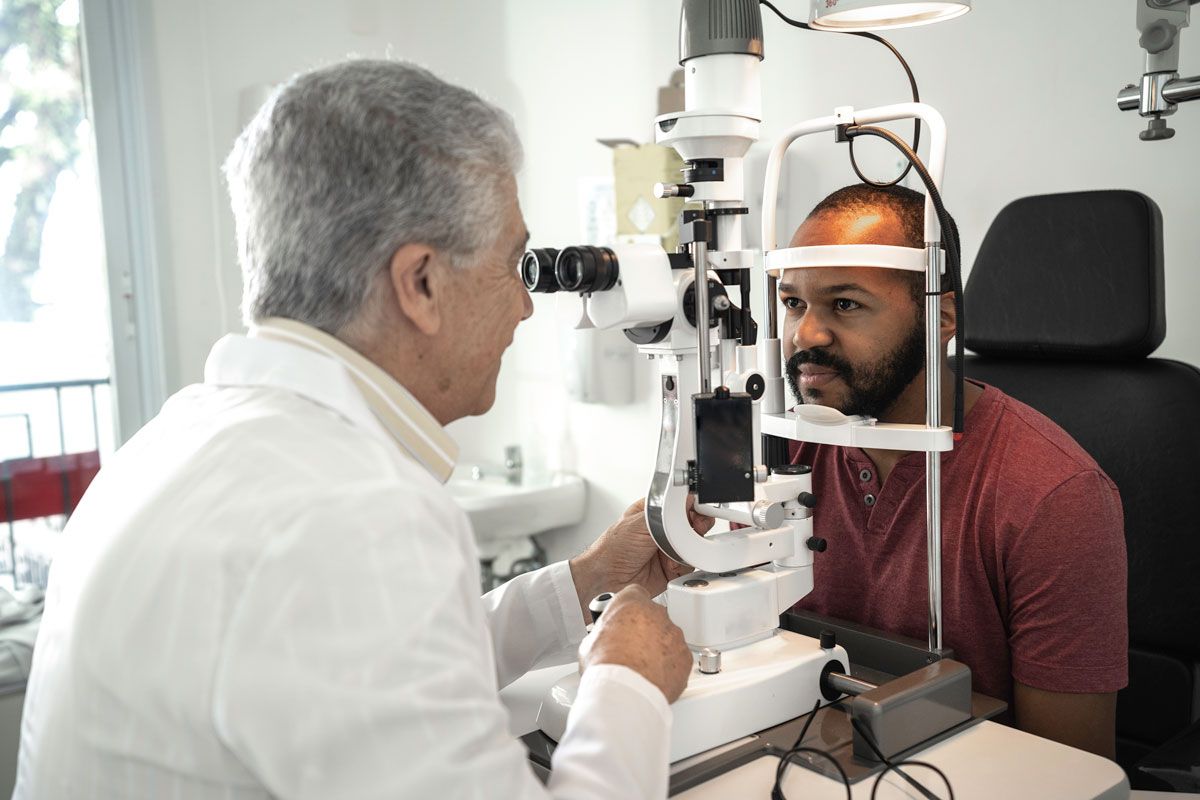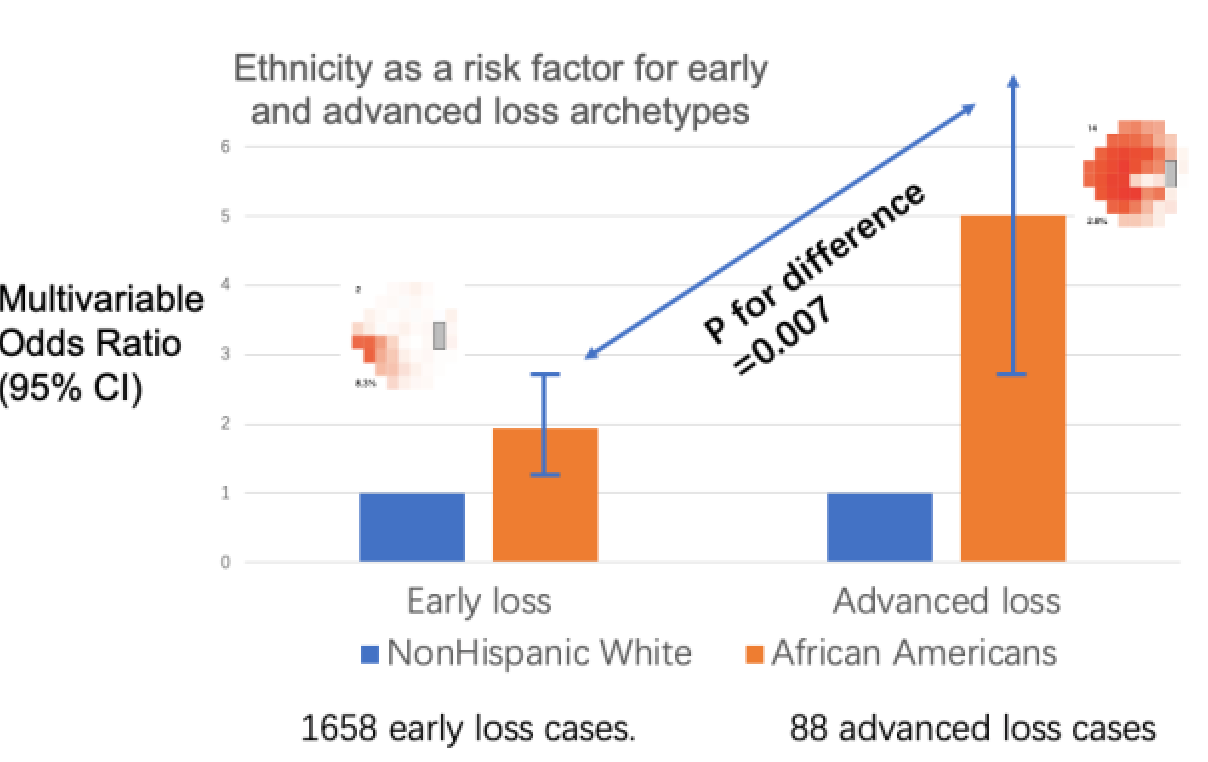Article
Study: Black patients six times more likely to have advanced vision loss after glaucoma diagnosis than white patients
Author(s):
Mount Sinai study could lead to earlier and increased screening for this population to prevent blindness.

Black patients have a dramatically higher risk of advanced vision loss after a new diagnosis of primary open angle glaucoma (POAG) when compared to white patients, according to a new study from New York Eye and Ear Infirmary of Mount Sinai (NYEE).
The work, published July 25 in Translational Vision Science and Technology, shows that being of African heritage is an independent risk factor for this drastic decline in vision, and should prompt more eye screening in this population for early glaucoma detection. This is the first study to use an artificial intelligence algorithm to break down visual field loss in new-onset glaucoma cases among United States-based population groups.
The work is important because glaucoma is the leading cause of blindness in the United States and primary open angle glaucoma is the most common type. POAG is the leading cause of optic nerve degeneration that is related to the pressure level inside the eye, but other factors also contribute to this condition. Patients typically experience few or no symptoms until the disease progresses and they have irreversible vision loss—underscoring the need for early glaucoma screening and detection in high-risk patient groups.
Senior author Louis R. Pasquale, MD, FARVO, deputy chairman for Ophthalmology Research at the Icahn School of Medicine at Mount Sinai and director of the NYEE Eye and Vision Research Institute, pointed out that the study has far-reaching impacts.
The figure shows that Blacks had a 2-fold increased risk for early loss archetypes compared to non-Hispanic Whites. Blacks had a 5-fold increased risk of advanced loss archetypes. The difference in increased risk for Blacks between the advanced loss archetypes versus the early loss archetypes was also statistically significant. The insets show examples of an early loss archetype on the left and an advanced loss archetype on the right.

“This study has tremendous implications for glaucoma screening of Blacks, who we already knew were a population at increased risk of glaucoma,” Pasquale said in a statement. “Screening earlier in life could significantly increase the chance of detecting glaucoma and slowing down progression before it reaches one of the advanced patterns shown in our research.”
A team of researchers analyzed nearly 210,000 participants from three population-based databases of nurses and health professionals from the Nurses’ Health Study (enrolled between 1980 and 2018, and 1989-2019), and the Health Professionals Follow-up Study (enrolled between 1986 and 2018). Participants were over the age of 40 and their data was collected during comprehensive eye exams—none had glaucoma at baseline. They were followed biennially and provided updated information on their lifestyle, diet, and medical status, including glaucoma diagnosis.
Within the study group, 1,946 patients developed glaucoma. Researchers analyzed their earliest record of visual field loss using archetype analysis, a form of artificial intelligence. The algorithm identified 14 archetypes: four representing advanced loss patterns, nine of early loss, and one of no visual field loss.
Black patients made up 1.3 percent of the study, but had a nearly twofold increased risk of early visual field loss archetypes, and a sixfold higher risk for advanced field loss archetypes, when compared to white patients. Asian participants, who constituted 1.2 percent of the participants, had a nearly two-fold higher risk of early visual field loss compared to white patients, but did not have a dramatically higher rate of advanced patterns of visual field loss. Hispanic patients made up 1.1 percent of the study population, and did not have an increased risk of any archetypes compared to white patients; however, the study showed they were at risk of an archetype showing initial loss near the center of their visual field. The results were controlled for a number of variables including socioeconomics, frequency of eye exams, heart disease, diabetes, and exercise.
Pasquale noted that the study started decades ago in three health professional cohorts that were not as diverse as current numbers—and if investigators had collected more representation of people of color, the results would likely be even more profound.
“African descent is a risk factor for glaucoma blindness, and this work provides insight into why that might be the case,” he said. “We suspect that the reason why Blacks presented with more advanced patterns of loss compared to whites is because the disease starts one to two decades earlier in the former group compared to the latter group. This emphasizes the importance of early screening strategies in Blacks to identify early-onset glaucoma so that visual disability in this population is averted.”
According to Pasquale, the next step for this work is to figure out the specific risk factors for the different patterns of visual loss seen in glaucoma patients—including genetic and environmental factors—so as to fully disentangle the pathogenesis of primary open angle glaucoma.
This study was done with collaborators at Brigham and Women’s Hospital and Massachusetts Eye and Ear. This work was supported by the National Eye Institute, part of the National Institutes of Health.
Newsletter
Don’t miss out—get Ophthalmology Times updates on the latest clinical advancements and expert interviews, straight to your inbox.




